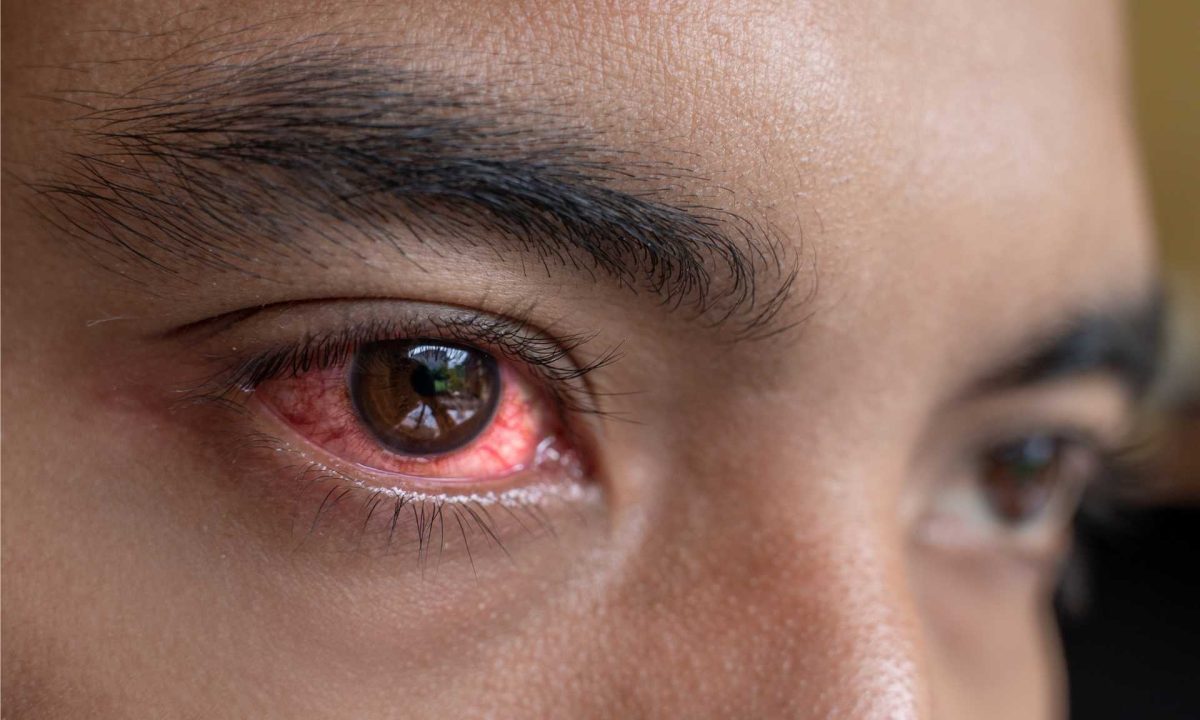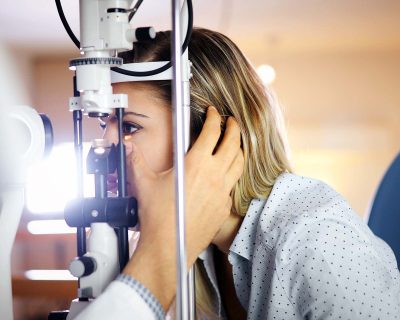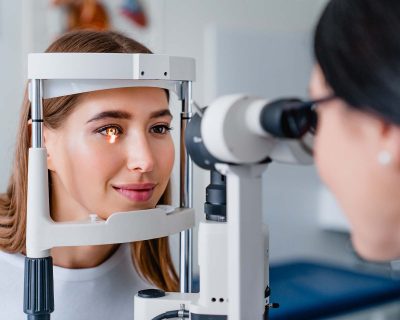
Exploring the Root Causes of Eye Irritation
Eye irritation is a common complaint among people of all ages, affecting millions worldwide. It manifests as redness, itching, burning, or discomfort, significantly impacting daily activities and quality of life. Understanding the root causes of eye irritation is crucial for effective prevention and management. Consulting an optometrist can provide valuable insights into the specific triggers and appropriate treatments for each individual. This article delves into various triggers of eye irritation, offering insights and tips to mitigate these uncomfortable symptoms.
Allergens
In addition to common allergens like pollen, dust mites, pet dander, and mould spores, everyday products such as perfumes, scented candles, and air fresheners can also trigger eye allergies. When these allergens come into contact with the eye’s surface, they can cause an immune response that leads to inflammation and irritation. For particularly sensitive individuals, even small exposures can trigger significant reactions. It’s beneficial to identify specific allergens through allergy testing if symptoms persist. Avoidance is the best strategy. However, when it’s not possible, using saline washes or artificial tears can help by flushing out allergens from the eye’s surface. In more severe cases, a doctor may prescribe stronger medications. Corticosteroid eye drops are a type of eye medication to control inflammation.
Additionally, creating an allergen-reduced environment can be crucial for those who are particularly sensitive. Using dehumidifiers to reduce moisture and prevent mould growth, choosing hypoallergenic bedding, and regularly cleaning air filters and ducts can also minimize exposure to airborne allergens. For personal care products, opting for fragrance-free or hypoallergenic options can decrease the likelihood of triggering allergic reactions. By taking these proactive steps, individuals can significantly reduce their exposure to irritants and allergens, thereby lessening the frequency and severity of allergic reactions in the eyes.
Environmental Irritants
Certain occupations also expose individuals to higher levels of environmental irritants. For example, construction workers, factory workers, and landscapers may encounter more dust, chemicals, and pollutants, putting them at a higher risk for eye irritation. Individuals in these professions must wear appropriate protective eyewear that seals around the eyes to shield them from these harmful elements.
Home environments can also harbour irritants. Indoor air quality can be improved by reducing the use of volatile organic compounds (VOCs) found in many paints, varnishes, and cleaning products. Ventilation improvements and indoor plants can help absorb some of these chemicals, reducing the overall load of irritants that can affect the eyes.
Additionally, routine maintenance of home heating, ventilation, and air conditioning systems can significantly reduce the presence of dust and other airborne irritants. Replacing air filters regularly with HEPA filters, ensuring ducts are clean, and using air purifiers in high-use areas can further improve indoor air quality. Simple practices such as removing shoes at the door and using doormats can also lessen the amount of outdoor pollutants brought inside, helping to maintain a healthier living environment that minimizes eye irritants.
Digital Eye Strain
In our digitally-driven world, prolonged use of electronic devices such as computers, smartphones, and tablets has led to a significant increase in cases of digital eye strain. Symptoms include dryness, redness, blurred vision, and general eye discomfort. This condition results from staring at screens for too long without adequate breaks, causing the eyes to become fatigued and irritated. It’s important to note that excessive screen time may affect your eyes, contributing to these symptoms and impacting overall eye health.
Combatting digital eye strain requires adopting healthier screen habits. It’s crucial to follow the 20-20-20 rule: every 20 minutes, take a 20-second break and look at something 20 feet away. Adjusting screen brightness, using matte screen filters to reduce glare, and ensuring your workstation is ergonomically set up with the monitor at eye level can also help alleviate strain.
Moreover, paying attention to the quality of light in your work environment can make a significant difference. Natural light is ideal, but if it’s not available, ensuring that your artificial lighting is neither too harsh nor too dim can prevent strain. Positioning your screen so that windows are to the side, rather than directly in front or behind, can help minimize glare and reflections that strain the eyes. Incorporating these strategies into daily habits not only helps reduce immediate symptoms of digital eye strain but also contributes to long-term eye health.
Contact Lens Wear
When people are asked for their opinion on the eyeglasses vs contact lenses debate, A significant number would pick contact lenses. Contact lenses are a popular vision correction option, offering an alternative to traditional eyeglasses. However, improper use can lead to significant eye irritation. Over-wearing contact lenses, not following proper hygiene practices, and using expired or inappropriate lens care solutions are common mistakes that can cause issues like redness, dryness, and infections.
To prevent irritation from contact lenses, it is essential to follow the recommended wear schedules, practice good hygiene by washing hands thoroughly before handling lenses, and regularly replace lenses and cleaning solutions as directed. It’s also wise to have regular check-ups with an eye care professional to ensure that your contact lens prescription and fitting are appropriate.
Furthermore, it’s important to consider the environment in which the contact lenses are worn. Activities involving water, such as swimming or showering, can expose contact lenses to harmful bacteria and other microorganisms, increasing the risk of eye infections. Therefore, it is recommended to avoid wearing contact lenses in such conditions or opt for daily disposable lenses that are discarded after a single use. By taking these precautions, contact lens wearers can enjoy the benefits of their lenses while minimizing the potential risks to their eye health.
Dry Eye Syndrome
Dry eye syndrome is a chronic condition that affects millions worldwide, manifesting as persistent dryness, irritation, and discomfort in the eyes, also known as “dry eyes“. It occurs when the eyes do not produce enough tears or the tears evaporate too quickly. This can lead to inflammation and damage to the ocular surface. Several factors can contribute to the development of dry eye syndrome, including age, hormonal changes, certain medications, and underlying medical conditions.
Age
One of the most significant risk factors for dry eye syndrome is advancing age. As people get older, tear production typically decreases, which can lead to the symptoms of dry eye. This condition is particularly common among those over the age of 50.
Hormonal Changes
Hormonal changes, particularly in women, can also significantly impact tear production. Changes associated with pregnancy, the use of oral contraceptives, and menopause can all contribute to the development of dry eye symptoms. Estrogen and progesterone influence tear secretion, and fluctuations in these hormones can lead to decreased tear production and stability.
Medications
Certain medications are known to cause or exacerbate dry eye symptoms. These include antihistamines, decongestants, blood pressure medications, and antidepressants. These drugs can reduce tear secretion or alter the composition of tears, making them less effective at lubricating the eyes.
Medical Conditions
Various systemic diseases also contribute to dry eye syndrome. Conditions such as diabetes, rheumatoid arthritis, lupus, scleroderma, and thyroid disorders can affect tear production and ocular health. Additionally, conditions that affect the eyelids or the surface of the eye, like blepharitis and meibomian gland dysfunction, can also lead to dry eye symptoms by disrupting the normal production and distribution of tears.
Understanding these underlying causes is crucial for the effective management and treatment of dry eye syndrome. Treatments may include lifestyle changes, over-the-counter or prescription eye drops, and, in some cases, procedures to close the tear ducts to prevent tear loss. Consultation with an eye care professional is essential for individuals experiencing persistent symptoms. This will ensure a tailored treatment plan based on the specific causes and severity of their condition.
Final Thoughts: Safeguarding Your Eye Health
Eye irritation can stem from various sources, each requiring specific strategies for prevention and treatment. By understanding these triggers and implementing appropriate care practices, individuals can significantly reduce discomfort and maintain optimal eye health. Remember, if you experience persistent eye irritation, consulting with an eye care professional is crucial to determine the underlying cause and receive appropriate treatment. Taking these steps ensures not only the health of your eyes but also the quality of your vision and overall well-being.




